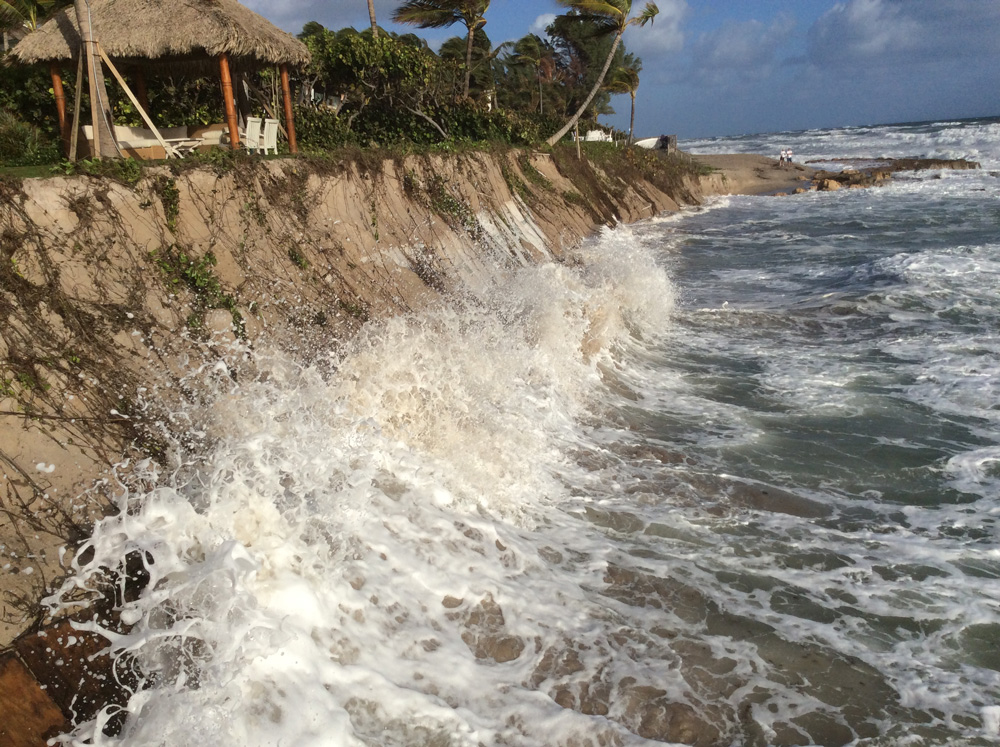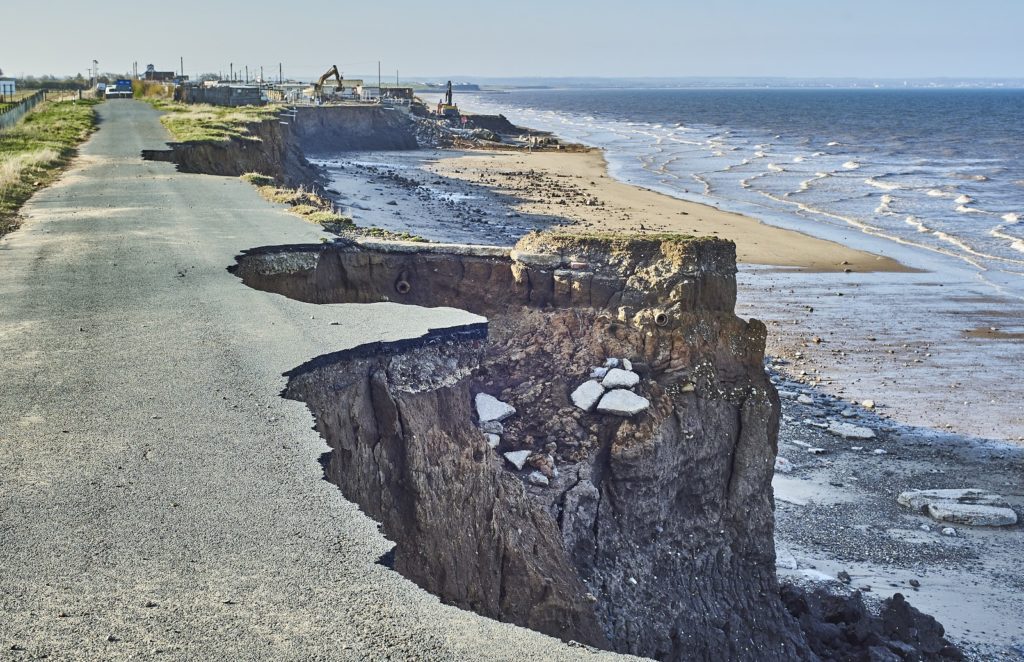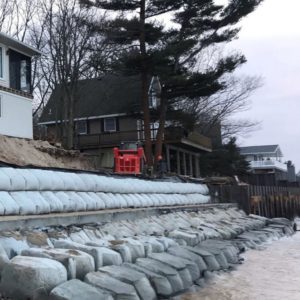Retaining Walls for Cliff & Bluff Erosion
By installing a TrapBag® barrier system, beach erosion will be slowed down drastically to reduce the need for sand re-nourishment.

What is cliff erosion or bluff erosion?

Cliff and bluff erosion are types of coastal erosion. Cliff erosion happens for two reasons: notching and collapse. Both are caused by a combination of marine processes and other erosive forces. Waves hitting the base of the cliff cause quickened erosion and notching. Notching leads to the collapse of the cliff.
Some of the marine processes that cause cliff and bluff erosion are wave action, weathering, spray, abrasion, rising water levels and honeycombing.
Every coastline is affected by storms and other erosive forces, and — across the globe — coastlines are at an increasing risk.
The financial effects of beach erosion are massive. Coastal erosion causes around $500 million annually in property damage. (Source: https://toolkit.climate.gov/topics/coastal-flood-risk/coastal-erosion#footnote1_sm196nh)
Another cause of coastal erosion is shoreline hardening. Shoreline hardening was once thought to be a method to protect coastlines, but is now understood to cause more damage than it solves. Structures like sea walls alter currents and divert wave action unnaturally.

How can shoreline properties with bluffs be stabilized?
Shoreline properties are usually on a slope leading to the water. The degree of the slope can vary from gradual to almost perpendicular. Bluffs and cliffs are extreme slopes, which means that they are extremely susceptible to erosion. Runoff can be highly detrimental. In order to prevent bluff erosion, you can do the following:
- Do not remove vegetation. Vegetation creates deep root systems which hold soil in place and prevent erosion.
- Divert runoff
- Slow runoff speed
- Reduce paved areas (which increase runoff)
- Use proper drainage systems
- Do not add additional weight / structures to the edges of the bluff
“You can reduce erosion risk on your property by following proven management practices—such as ensuring that rainwater and roof runoff are diverted away from the bluff, leaving trees and vegetation intact, and adding native plantings. If wave-based erosion at the toe of the bluff is increasing erosion, be sure to consider soft shore protection options—which can offer good erosion protection—instead of a bulkhead.”
Even after taking the above actions, some extreme conditions can still cause damage. Storms, rising water levels, and high winds can cause wave action to increase. You can stabilize the shoreline further by using methods like retaining walls (bulkheads), rip rap, or concrete blocks. These methods are referred to as “hard armoring” and should really only be used in emergency situations.
When hard armoring is used, beach sand cannot build up. The water levels continue to rise, while the beach level remains the same.
“If bluffs and beaches are allowed to erode naturally, their sand and sediment will help build up beaches as sea levels rise. But if bulkhead construction increases, more of those materials will be locked up.
A better alternative is soft shore protection, which can mitigate the effects of sea-level rise without harming native species, which already face the threat of warmer and more acidic waters.”
How can retaining walls help stabilize bluffs or cliffs?
Retaining walls are structures made to resist erosive forces from wind and water to help stabilize bluffs and cliffs.
“Retaining walls are also used along the coast for protection against wave damage and bluff failure. Both vertical walls and revetments can be used for protection, and the design for each must consider beach scour, storm wave height, wave run-up, tide level and future sea level conditions, as well as the geologic properties of the bluff face.”
There are 3 main types of retaining walls: cantilever, anchored, and gravity.

How does TrapBag work as a retaining wall?
TrapBags® are great for erosion control because they take on wave action and secure the land behind it preventing further erosion. The TrapBags® come with attachable lids that prevent the fill material from escaping during wave action. By installing a TrapBag® barrier system inside the beach, the beach erosion will be slowed down drastically to reduce the frequency, volume and cost for sand re-nourishment.
TrapBag® products can be a solution for many types of erosion. TrapBag® is a low cost, rapid deploy erosion control barrier bag similar to, yet superior than, conventional sandbags.
Meet the author
Get the Dirt Before the Flood Hits
Stay ahead of flooding, erosion, and disaster response challenges. The Dirt, TrapBag’s monthly newsletter, delivers field-tested tips, real-world case studies, and the latest in barrier technology straight to your inbox.

